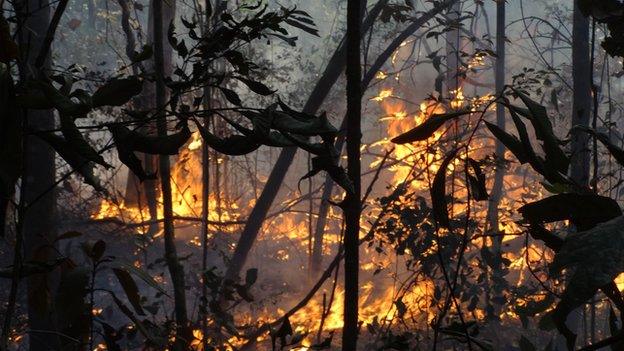Dry tropical forests 'overlooked and under threat'
- Published

The vast trunk, used for water storage, of the Cavanillesia umbellata tree is one of the most conspicuous characteristics in a dry forest
Tropical dry forests are among the most threatened habitats on the planet, yet remain overlooked by scientists and conservationists, warn researchers.
Despite being home to many species found nowhere else on the planet, few forests are protected, a study shows.
The extent of these valuable biological hotspots is just 10% of its historical range, as the biome's fertile soil make it an ideal place to grow cash crops.
The findings have been published in the journal Science, external.
These landscapes, with fertile soils and favourable climate, were utilised by advanced pre-Columbian civilisations, such as the Incas. The forests provided valuable arable land and were the source of important food crops, such as maize, tomatoes, beans and peanuts.
"Neotropical seasonally dry forest is a biome (a large naturally occurring community of plants and animals) with a wide and fragmented distribution, found from Mexico to Argentina, and throughout the Caribbean," the authors wrote.
The team from Latin America and Caribbean Seasonally Dry Tropical Forest Floristic Network (DryFlor), based at the Royal Botanic Garden Edinburgh (RBGE), Scotland, defined dry forest as having a closed canopy, "distinguishing it from more open, grass-rich savanna".
Using data from more than 1,600 inventories of species found in these biomes throughout the regions, they identified that the landscapes contain a "remarkable 6,958 species of woody plants", many of which were not found anywhere else in the world.
Despite the biological and genetic importance of these species, most of the dry forests were not protected.

Just over 1% of the Caatinga dry forest in northern Brazil is fully protected, compared with almost 10% of the Amazon rainforest
The team observed: "In light of probable warmer climates in the tropics, conservation of unique dry forest species that have adaptations to heat and drought should be a global priority."
Co-author Toby Pennington, head of tropical diversity at RBGE, explained that dry forests were often overlooked as a result of more charismatic rainforests.
"If you go to this small area of rainforest, there is fantastic diversity and they have this enormous physical scale that perhaps dry forests do not have," he told BBC News.
"Since the year dot when the first biological explorers went to the region, there has been a focus on this and the drier biomes have tended to be forgotten.
"I think tropical dry forests have also suffered because they were already destroyed, at least in Latin America's pre-conquest areas. These are the areas where [pre-Columbian] civilisation started."
Roots of civilisation
Prof Pennington recalled a time he was carrying out an inventory survey in Bolivia.
"After about an hour, we thought there was something a bit funny about how we kept going up a really steep bit before the land went flat.
"We then realised that we were on Inca terracing, where [the dry forest] had regenerated. This was because a lot of the pre-Colombian civilisations were located in dry forest areas."
The conditions and landscapes provided by the neotropical dry forests played a pivotal role in the emergence of these civilisations, and can be directly compared with the Fertile Crescent in the Middle East, which is also known as the Cradle of Civilisation.
The fertile land and the domestication of wild food crop species allowed nomadic tribes, which previously had to follow the seasons and their food, to settle and form early towns and cities.
Prof Pennington identified another factor that probably contributed to the lack of protection for the forests - fragmentation.
"It is not like the Amazon, which is located in one huge block. Dry forests are spread from Mexico all the way down to Argentina, yet it has a different name to what it is called in Argentina or in Brazil so there is quite a problem of people not actually realising that their country houses part of this continental system. This means all the focus was done nationally," he explained.

The DryFlor network has produced a short animated film to highlight the history and importance of dry tropical forests
"Part of what we have been trying to do [via the DryFlor network] is to give it a continental scale focus. This is quite important because then, for example, a policymaker in Peru realises they have a landscape that is globally significant rather than just looking at it from a national point of view."
He said he hoped the findings of the study published in Science would help raise awareness of the plight facing dry forests amongst the scientific and policy communities.
Growing awareness
"In Mexico, its [dry forest] vegetation grows all the way down the Pacific coast, and because Mexico does not have a huge rainforest area, the dry forest is quite well known, recognised and researched, therefore it is quite well protected," he explained.
"However, in other countries this may not be the case," Prof Pennington added.
"I have done some work in Peru where there are some geographically small areas of dry forest. About 15 years ago, I started doing some inventory work and it was shown, as this paper has confirmed, that 40% of the woody species there grew absolutely nowhere else in the world.
"I have also done some molecular research and this has shown that some of these species are incredibly ancient, up to 10 million years old. These sites are real museums of diversity. Yet in that area, there is not a single protected [site]. In my view, Peru has not recognised the importance of what it is holding.
"I hope this paper will highlight the importance to the Peruvian community and say that this is a globally significant piece of forest and perhaps we should do something about it.
"In terms of next steps, we have partners in each of these Latin American countries that have co-ordinated this data accumulation, and we are hopeful that this paper in Science will help give them the leverage to start talking to policymakers. This is the start of a process."
The team has also produced a short animated film that highlights the importance of dry forests, external in Latin America and the Caribbean, both historically and in the years to come.
Follow Mark on Twitter., external

- Published15 December 2014
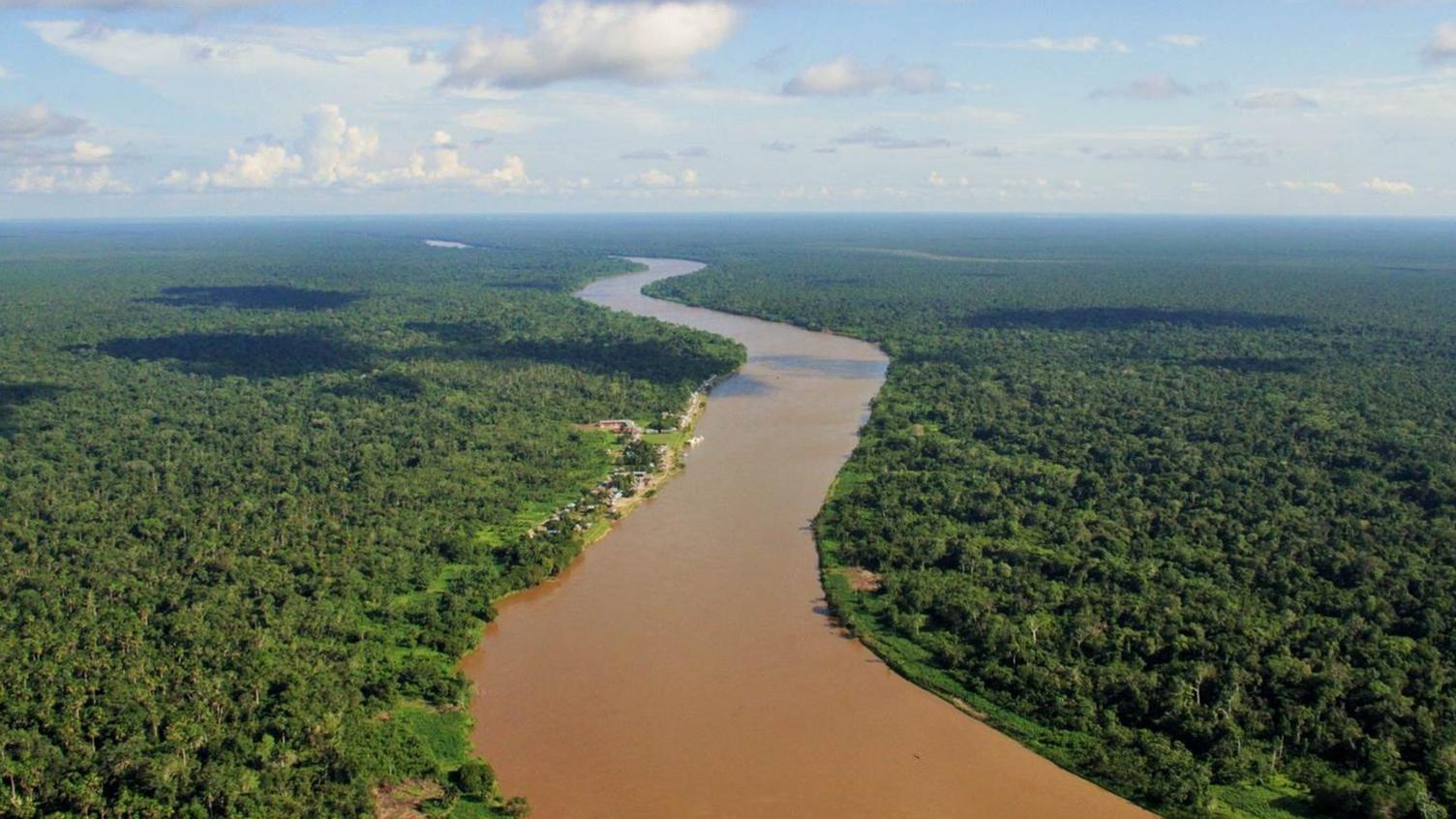
- Published26 July 2012
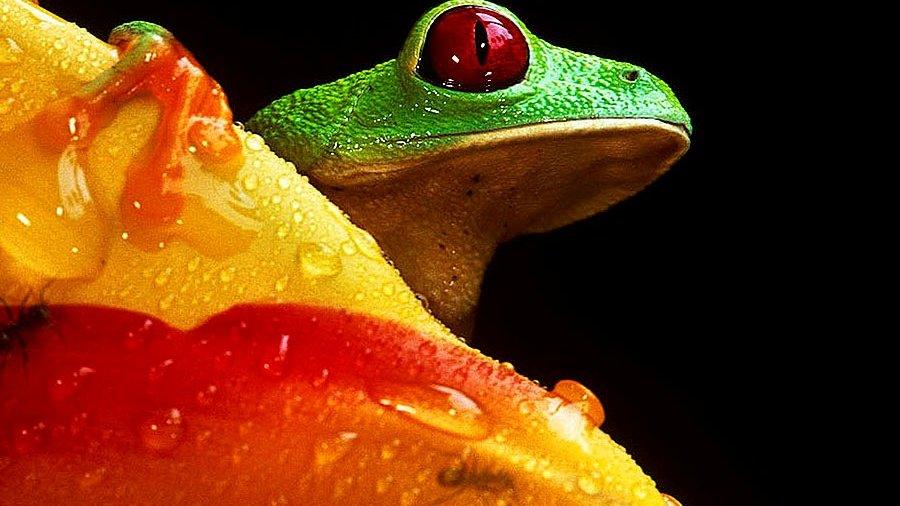
- Published26 August 2012
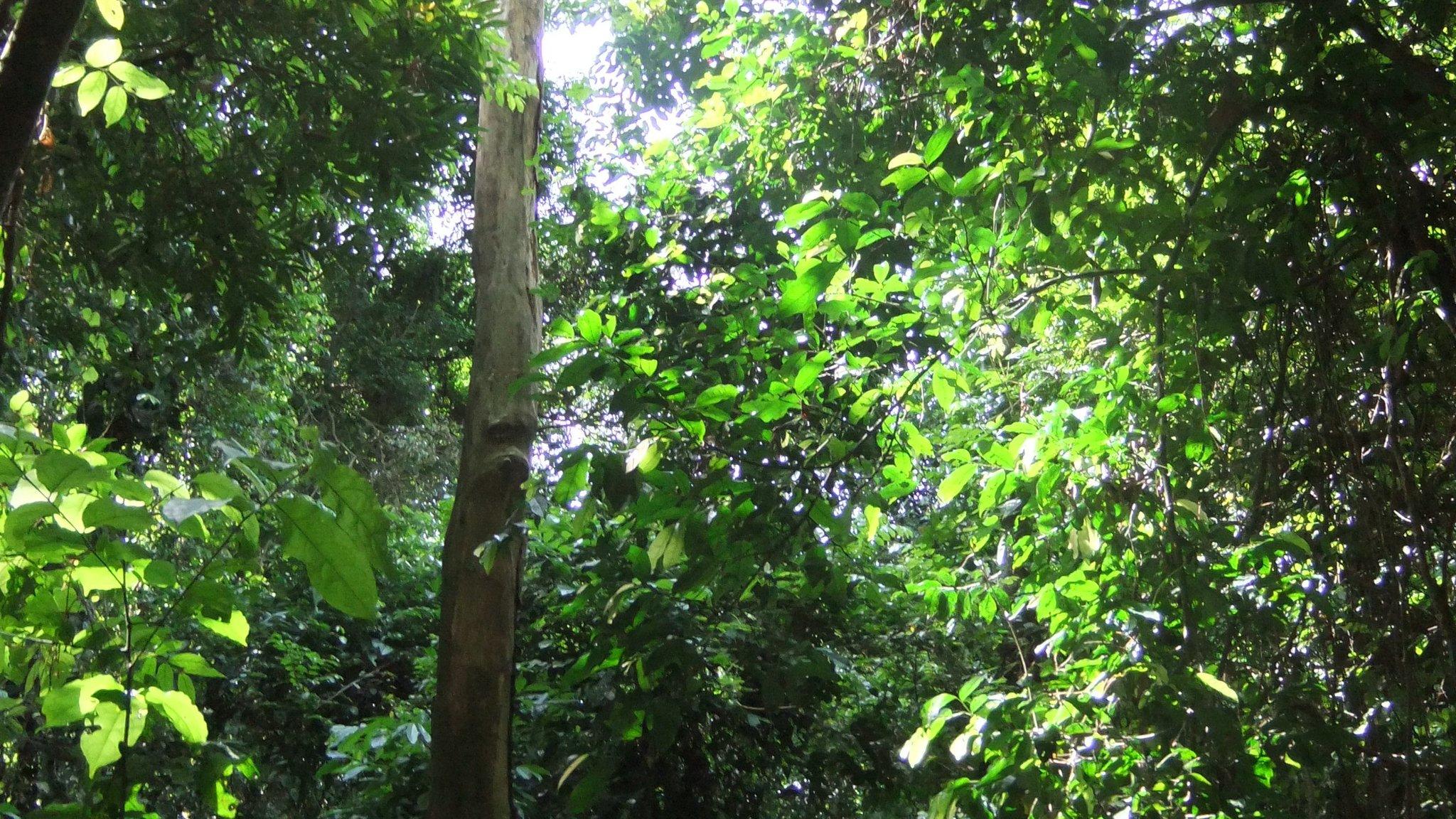
- Published22 July 2016
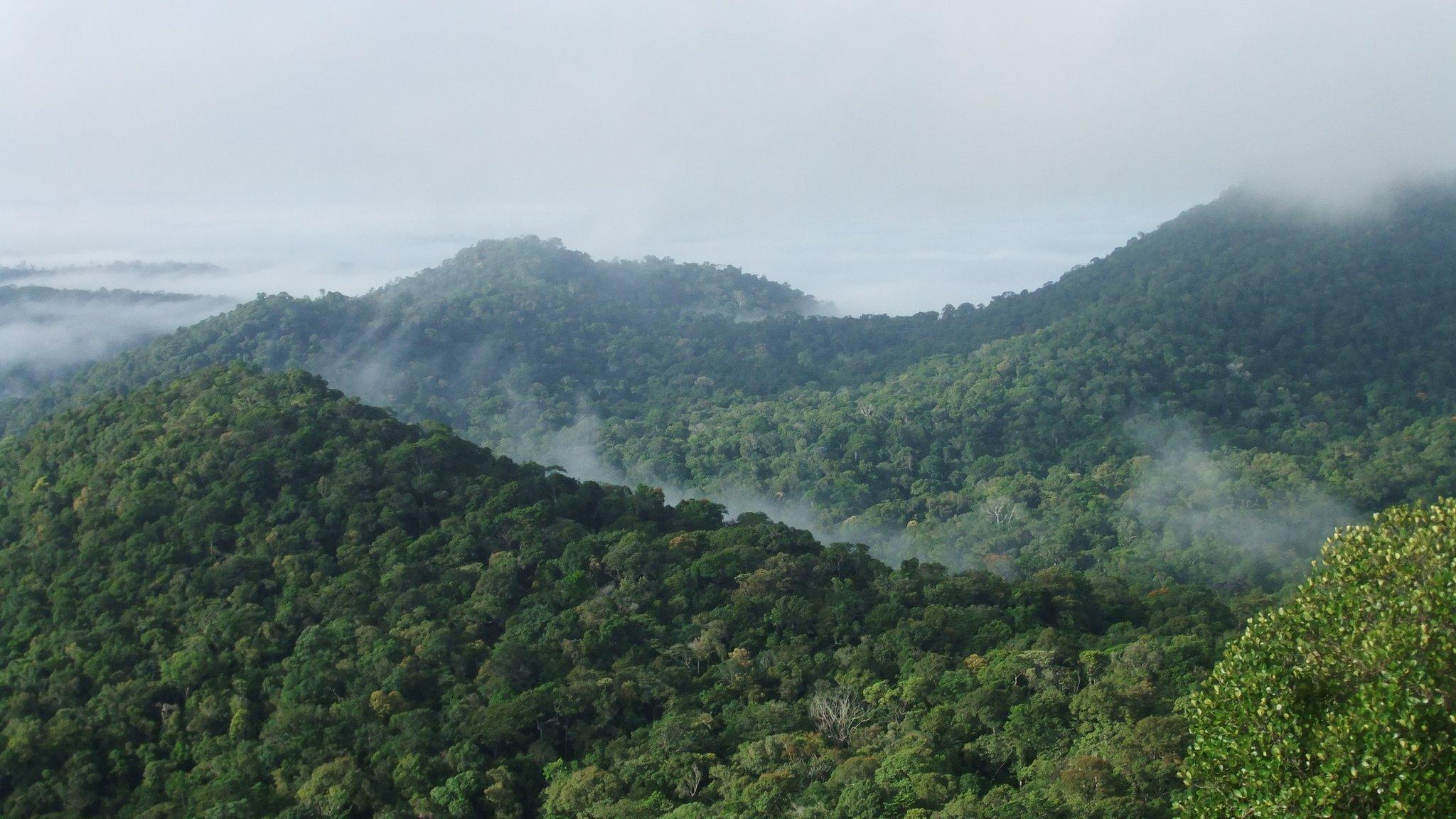
- Published4 February 2016
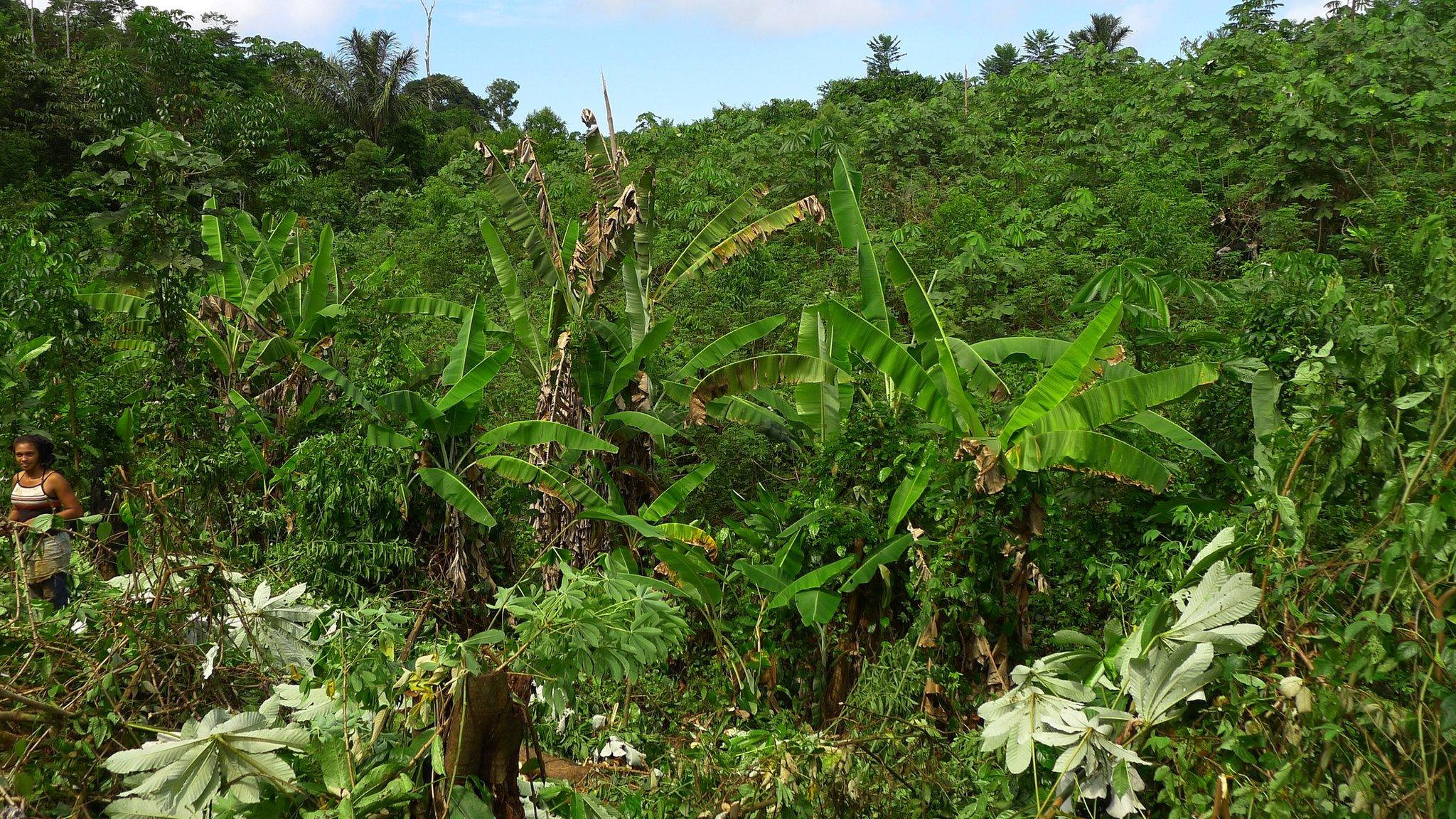
- Published28 April 2015

- Published15 April 2014
